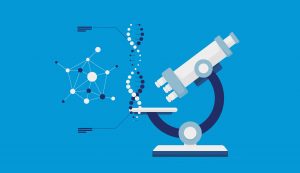Director’s message: Postmortem autism research is now doable
 Science is often described as involving the research of solvable problems. Problems become solvable when the right resources and technology are brought together for use by researchers who have prepared themselves to carry out doable experiments.
Science is often described as involving the research of solvable problems. Problems become solvable when the right resources and technology are brought together for use by researchers who have prepared themselves to carry out doable experiments.
Autism BrainNet was established because, until recently, there was a lack of donated brain tissue from individuals who were autistic during life. Thus, research into the genetic or structural changes in the autistic brain was not doable because of the lack of this precious resource. This situation is now changing due, in part, to the generosity and selfless contributions of autistic individuals and their families. While larger numbers of donations are still needed to deal with the enormous heterogeneity of autism, the Simons Foundation Autism Research Initiative (SFARI) launched a request for research applications in November of 2021 to fund new postmortem brain research. On June 30th, SFARI announced that it was funding four new grants based on the use of postmortem brain tissue donated to Autism BrainNet.
This research involves both genetic and neuroanatomical approaches. It will answer genetic questions about how genes are regulated in identified brain pathways and the occurrence of regional and cellular DNA alterations in the autistic brain. Two of the studies will focus on the structure and genetics of the connections (or white matter) in the brain. There are numerous brain imaging studies in living individuals indicating that white matter is altered, but very little research has been carried out on the postmortem autistic brain. This new research will contribute to our understanding of why the connections are altered. All four of these research programs will be starting shortly and tissue samples are being prepared and distributed to the funded laboratories. We expect to start hearing results from these studies in the next 2-3 years.
As we work with investigators to have the very best chance of finding real, autism-related brain changes, we want to encourage families who are considering brain donation to act as quickly as possible and to call Autism BrainNet when the death of a loved one is near or has occurred. It is ideal if the donation is made within 24 hours after death. This will help preserve the scientific value of the brain tissue and contribute to the highest quality research studies. We also want potential donors to know that we will not be able to accept donations in the future, where the time between death and preservation at one of the Autism BrainNet Nodes will be greater than 60 hours.
Postmortem autism research is now doable, and we strive to make the Autism BrainNet collection an optimal resource for unlocking the mysteries of autism. This knowledge will lead to better and targeted treatments to improve the quality of life of all autistic individuals.